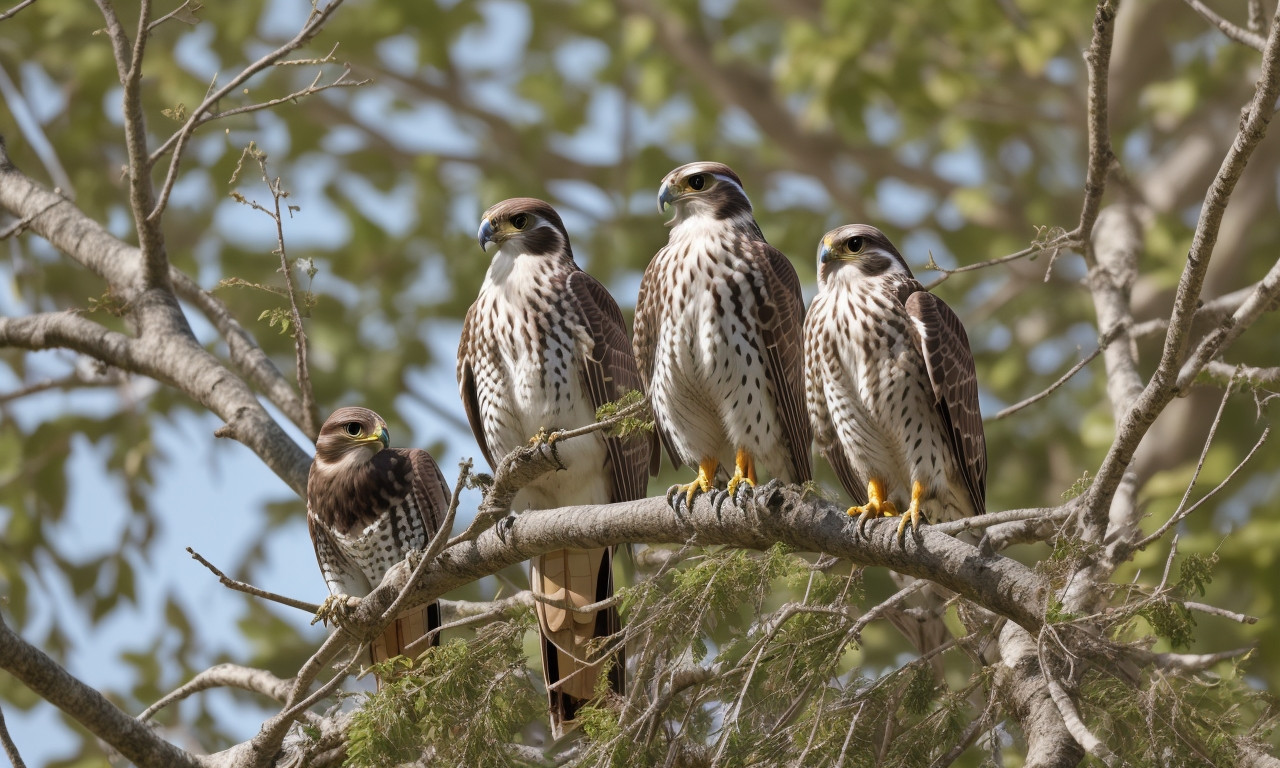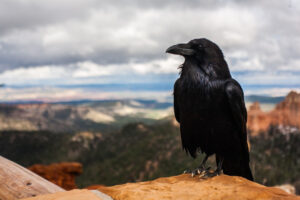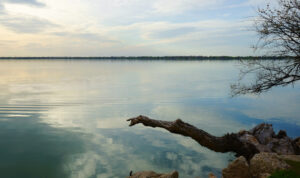Michigan’s lush landscapes and sprawling forests provide a home to a myriad of wildlife, including some of nature’s most adept aerial predators—falcons. These birds of prey are not just feathered hunters of the sky but are also indicative of the health of our ecosystems. They are dexterous, fast, and amongst the most intelligent of birds, making their observation a captivating subject for nature enthusiasts and ornithologists alike.
In this comprehensive exploration, we will unearth the life and habits of Michigan’s falcons, the role they play within the local environment, and the efforts to ensure their preservation. As we delve into the details, expect to learn fascinating facts about these fearsome predators and their interactions within Michigan’s rich biodiversity.
The Majesty of Michigan’s Falcons
Understanding the Falcon Family
Falcons belong to the family Falconidae, a diverse group of diurnal birds of prey that are broadly distributed across the world. In Michigan, several species notably grace the skies, including the Peregrine Falcon (Falco peregrinus), the Merlin (Falco columbarius), and the American Kestrel (Falco sparverius). These species vary in size, coloration, and behavior, but they all share distinctive traits that set them apart as falcons – such as sharp talons, a pronounced notched beak for killing prey, and exceptional flying abilities.
Related article; finches in michigan
Unique Attributes of Falcons
A closer look at these birds reveals physical adaptations perfect for their predatory lifestyle:
Related article; types of ducks in florida
- Sharp, hooked beaks for tearing flesh
- Powerful talons for capturing and holding prey
- Keen eyesight for spotting prey from high altitudes
Their Role in Michigan’s Ecosystem
As top predators in the food chain, falcons play a significant role in controlling populations of smaller birds and rodents, thus maintaining a balanced ecosystem. Their presence or absence can signal changes in environmental health, making them crucial indicators for conservationists.
Related article; owls in oklahoma
Habitats and Habitation: Where to Find Falcons in Michigan
Popular Falcon Habitats
Michigan provides diverse habitats suitable for falcons, ranging from urban skyscrapers to the dense forests and open fields that dot the landscape. Each species has its own preferred environment; for instance, Peregrine Falcons are often found nesting on high ledges of city buildings, while American Kestrels favor open areas with scattered trees that provide vantage points for hunting.
Related article; owls in wisconsin
Seasonal Migration Patterns
Some falcons are permanent residents in Michigan, while others are migratory, with species like the Merlin traveling long distances annually. Migration is a spectacle in itself, as these birds often cover vast distances with resilience and determination.
Related article; indiana woodpeckers
Falcons on the Wing: Behavior and Hunting Techniques
Noteworthy Flight Capabilities
The falcon is famed for its flying prowess, exhibiting speeds that can surpass those of any other creature in the animal kingdom. The Peregrine Falcon, in particular, is renowned for reaching speeds of over 200 miles per hour during its hunting stoop, making it one of the fastest birds in the world.
Related article; white bird long beak florida
Hunting Methods Unveiled
Falcons employ various hunting strategies, often tailored to their environment and prey. Key techniques include:
Related article; hawks colorado
- High-speed dives to surprise prey
- Agile maneuvering through dense forests
- Stealthy approach flights to remain undetected
Prey and Predation
The diet of falcons consists of smaller birds, insects, and mammals like voles and mice. Their predation not only is a display of nature’s raw spectacle but also a vital interaction within the food web.
Related article; sparrows in ohio
Conservation of Michigan’s Falcons: A Continued Effort
Challenges Faced by Falcon Populations
Falcons, like many birds of prey, have faced obstacles to their survival, including habitat loss, pesticide exposure, and historical persecution. The use of DDT in the past caused severe declines in populations due to eggshell thinning, leading to reproductive failures.
Initiatives for Protection
Conservation programs have worked tirelessly to reverse the declines in falcon populations. Notable efforts include:
- Banning harmful pesticides
- Implementing nest box programs to provide safe breeding sites
- Monitoring programs to track and promote health and expansion of falcon populations
The Role of Public Awareness and Participation
Public education and citizen engagement play significant roles in falcon conservation. Wildlife enthusiasts and volunteers often take part in data collection and monitoring, which aids researchers in their efforts to protect these birds.
Falcons Through the Lens: Observing Michigan’s Raptors Up Close
Finding Falcon Hotspots
For those keen to observe these birds in their natural setting, Michigan offers several prime locations where falcons can be spotted throughout the year. Prominent places include various state parks, nature reserves, and even urban centers like Detroit, where Peregrine Falcons have made a dramatic comeback.
Photography and Birdwatching Tips
Capturing images of falcons or simply watching them requires patience and respect for their space. Use of long lenses for photography, avoidance of nest disturbance, and adherence to ethical birdwatching practices are essential for a fruitful experience.
Education and Tours
Many organizations host educational events and guided tours focused on falcons. These gatherings are perfect opportunities to learn from experts and to witness these spectacular birds in flight.
Unveiling the Future of Falcons in Michigan
Research and Ongoing Studies
The work towards understanding falcon biology and ecology is ever-continuing, with researchers studying everything from migration patterns to the impact of urban environments on falcon behavior. This research is pivotal in shaping conservation strategies and ensuring a stable future for Michigan’s falcons.
Community Involvement and Stewardship
Active participation by communities is fundamental to maintaining safe habitats for falcons. Local stewardship initiatives include habitat restoration projects and promoting safe practices that limit human impact on falcons and their prey.
The Potential of Eco-tourism
Eco-tourism centered around birdwatching and falcon observation has the potential to bolster local economies while fostering a greater appreciation for these predators. By promoting sustainable observation practices, Michigan can both protect its falcons and share their magnificence with visitors from around the world.
Encounters of the Falcon Kind: Personal Stories and Sightings
Testimonials From the Field
Accounts from birdwatchers and naturalists who have witnessed falcon behavior firsthand can be extremely compelling. Tales of the intense focus of a hunting Peregrine or the delicate care of kestrel parents tending to their young bring the narrative of these birds to life.
Documenting Falconry in Michigan
The ancient art of falconry, which involves training birds of prey to hunt, is alive in Michigan. This tradition offers another dimension to the appreciation of falcons, embodying a respectful partnership between humans and these avian hunters.
The Impact of Conservation Success Stories
Success stories, such as the recovery of the Peregrine Falcon from the brink of extinction, inspire hope and demonstrate the effectiveness of concerted conservation efforts. These narratives underscore the possibility of positive change when humans work in harmony with nature.
Falcons serve as vigilant guardians in Michigan’s ecosystems, their presence a testament to the health of the natural world. They remind us that each creature, no matter how high it soars, is interconnected with the fates of all others on this planet. Fostering their survival is not just an investment in the conservation of a species but also a commitment to the future wellness of our environment.
For Michigan, the story of falcons continues to be written in the open skies, forests, and fields of the state. Through education, conservation, and observation, we can all play a part in this ongoing narrative, ensuring that the falcons’ piercing cry remains a fixture in the soundscape of our wild spaces.




